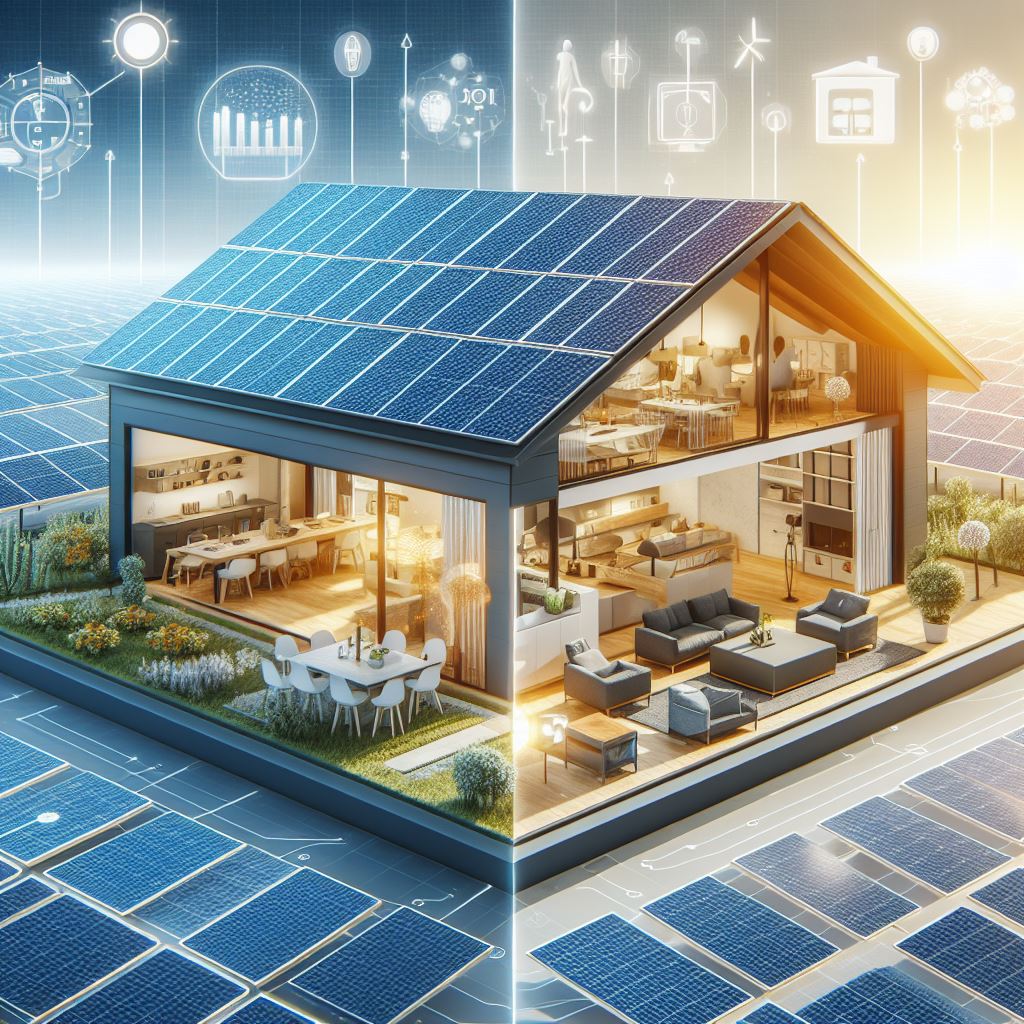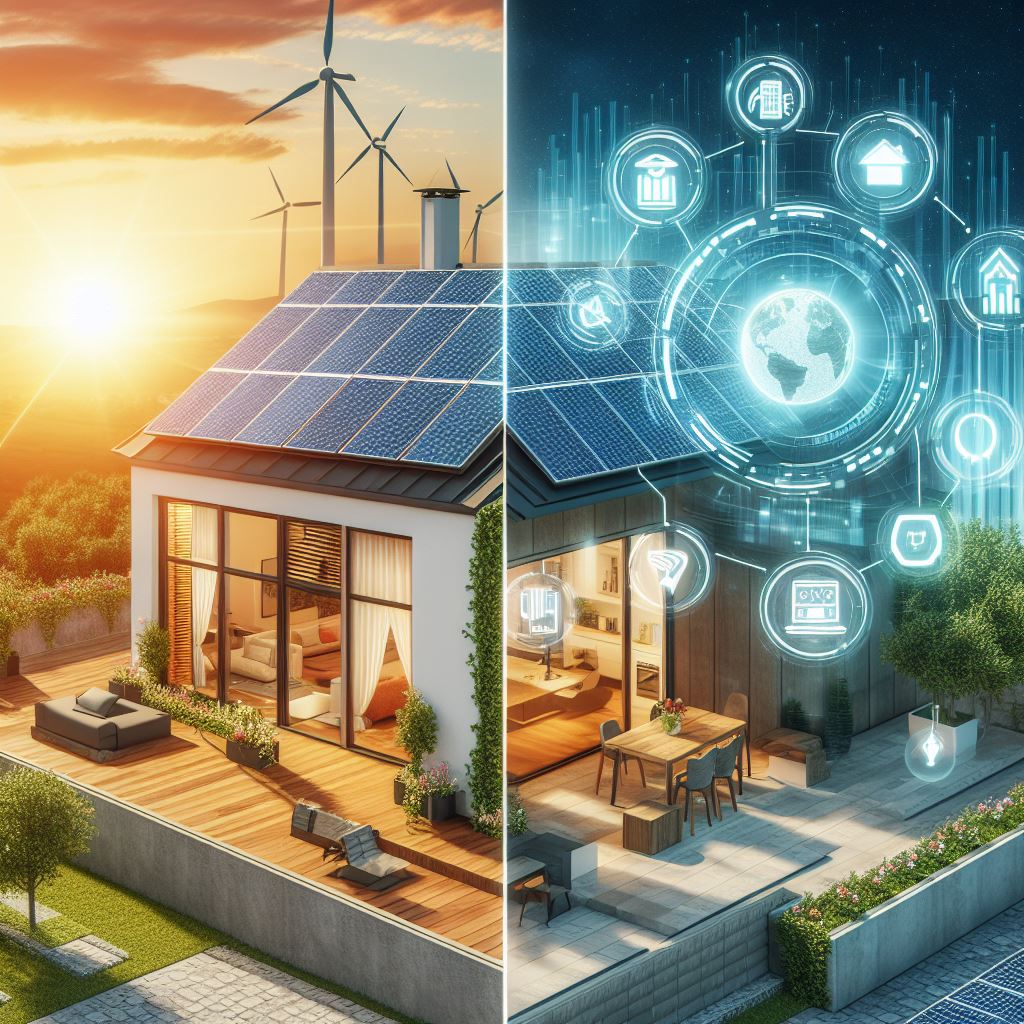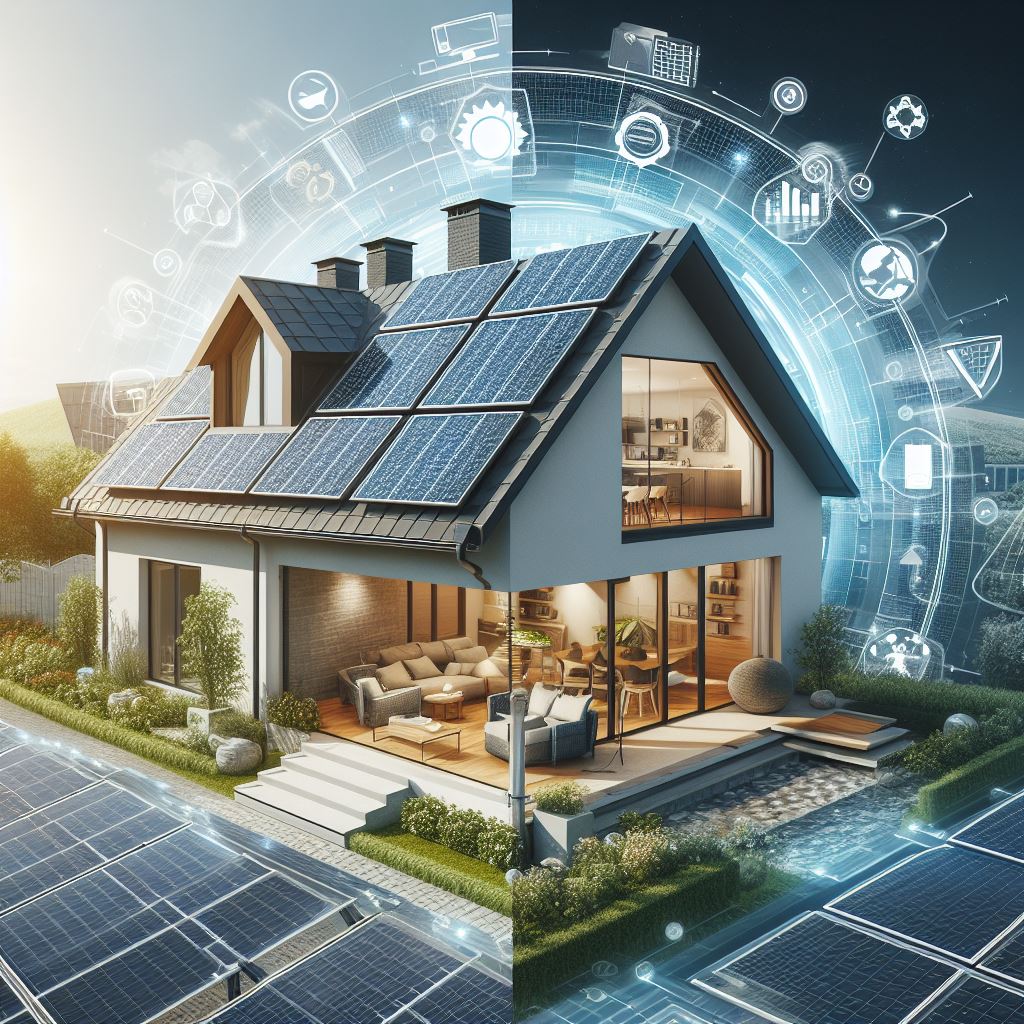Empower your home with sunshine and reliable power! Dive deep into this comprehensive guide exploring How solar ups work, their advantages, and addressing all your lingering questions through detailed FAQs.
Solar Uninterruptible Power Supply (UPS) systems are rapidly becoming a popular choice for homeowners seeking a sustainable and dependable solution for their energy needs. But have you ever wondered exactly how these systems work? This in-depth guide unravels the intricate workings of solar UPS systems, equipping you with the knowledge to make informed decisions regarding your home’s power requirements.
Delving into the Core Components of a Solar UPS System
A solar UPS system operates seamlessly by integrating three key components:
- Solar Panels: The Sun Catchers: These panels act as the lifeblood of the system, cleverly converting sunlight into usable Direct Current (DC) electricity. They are typically composed of photovoltaic (PV) cells, which are constructed from layers of semiconductor materials like silicon. When sunlight strikes these cells, it disrupts electrons within the material, causing them to flow and generate electricity. The efficiency of solar panels varies depending on factors like material quality and sunlight intensity.
- Solar Charge Controller: The Intelligent Gatekeeper: This critical device acts as the traffic controller for the DC electricity flowing from your solar panels to the battery bank. It meticulously regulates the current and voltage to ensure the batteries are charged safely and efficiently. The solar charge controller prevents overcharging, which can damage batteries and shorten their lifespan. Additionally, some advanced charge controllers offer features like maximum power point tracking (MPPT) to optimize energy production from your solar panels under varying weather conditions.
- Solar Inverter (UPS): The Powerhouse Transformer: This remarkable component is the heart of the system, responsible for converting the stored DC electricity from your battery bank into usable Alternating Current (AC) electricity. Our homes and most appliances utilize AC electricity to function. The solar inverter essentially performs the critical task of transforming the DC output from the batteries into the AC format needed to power your devices seamlessly. Modern solar inverters are highly efficient and come in various sizes to suit the specific power requirements of your home.

Harnessing the Sun’s Bounty: A Step-by-Step Look at How a Solar UPS System Works
The process of harnessing the sun’s power and delivering it to your home through a solar UPS system unfolds in a beautiful and efficient dance:
- Solar Energy Capture: Sunlight bathes the solar panels, triggering the photovoltaic effect within the PV cells. This process generates DC electricity, the initial form of usable energy produced by the system.
- Controlled Charging: The DC electricity produced by the solar panels travels to the solar charge controller. This intelligent device meticulously regulates the current and voltage to ensure the batteries are charged safely and efficiently. By preventing overcharging, the controller safeguards the batteries and extends their lifespan.
- Power When Needed (Prioritizing Solar): During daylight hours, the solar UPS system prioritizes utilizing the generated solar power to directly run the appliances in your home. This reduces your reliance on the utility grid and allows you to leverage the free energy from the sun. Any excess solar energy that is not immediately consumed by your appliances is cleverly diverted to the battery bank for storage.
- Uninterrupted Power Supply (Battery Backup): As the sun sets or during power outages, the brilliance of the solar UPS system truly shines. In the absence of sunlight, the system seamlessly switches to battery power. The inverter steps up, converting the stored DC battery power into usable AC electricity. This ensures your essential appliances continue to operate uninterrupted, allowing you to enjoy the peace of mind that comes with continuous power, even during grid outages.
- Grid Integration (Optional but Beneficial): Some advanced solar UPS systems can be designed to connect to the utility grid. This offers additional benefits. During periods of peak solar production, when your system generates more energy than your home consumes, the excess power can be fed back to the grid. This can provide you with credits on your electricity bill or even allow you to sell the excess energy back to the power company, potentially generating additional income. Conversely, when solar production is insufficient, the system can intelligently draw power from the grid to supplement your needs and ensure your home remains powered.
Solar UPS Systems in Pakistan
In Pakistan, the significance of UPS systems extends far beyond just office spaces and industries; they’ve become essential for households as well. Given the economic climate, there has been a notable uptick in UPS sales and imports across the country. Let’s delve into the details of Solar UPS systems in Pakistan.
UPS, short for “Uninterruptible Power Supply,” proves invaluable during prolonged load shedding or frequent power outages that plague various sectors of the country. Essentially, it’s an electrical device that ensures a steady supply of electricity during blackouts, be it in offices or homes.
Advantages
There’s been a rapid surge in public awareness regarding the advantages of utilizing solar panels and related electronic devices that harness solar energy. From solar power banks to street lights and even solar fans, the array of solar-powered technologies continues to expand, offering sustainable solutions to power woes.
The advent of solar UPS systems represents a significant stride in modern technology. These systems boast features like cost-effectiveness, high performance, and minimal maintenance requirements, making them an attractive alternative to traditional UPS systems reliant on hefty batteries.
Solar UPS systems typically comprise solar panels, a charge controller, and UPS batteries. With such compelling benefits, consumers are increasingly inclined to opt for solar UPS systems, considering their affordability and efficiency.
Types of solar UPS
When it comes to solar panels, there are four primary types of solar UPS systems available worldwide, ranging from 700VA to 3kVA systems. These systems not only provide reliable power backup but also ensure a seamless transition during power outages with features like pure sine wave inverters and auto-restart capabilities.
Solar UPS systems streamline this process further by harnessing solar energy to charge batteries, eliminating the need for continuous grid power. Equipped with built-in solar charge controllers, these systems efficiently convert solar energy into usable power, ensuring uninterrupted operation.
With both grid and solar charging capabilities, solar UPS systems offer a reliable power supply during outages, making them increasingly popular among consumers seeking cost-effective and sustainable solutions.
Why Choose a Solar UPS System for Your Home?
Solar UPS systems offer a compelling combination of benefits that can significantly enhance your home’s energy independence, sustainability, and overall value:
- Energy Independence: Empower yourself by reducing your reliance on the utility grid. Generate clean, renewable power for your home using the abundant energy of the sun. This not only reduces your electricity bills but also fosters a sense of self-reliance.
A Multitude of Advantages: Why Choose a Solar UPS System for Your Home?
- Uninterrupted Power Supply: Say goodbye to the frustration and inconvenience of power outages! A solar UPS system ensures your essential appliances, like lights, refrigerators, and medical equipment, continue to function uninterrupted during blackouts. This peace of mind is invaluable, especially for those who rely on critical medical devices or work from home.
- Cost Savings: Harnessing the free energy of the sun can significantly reduce your electricity bills. By utilizing solar power for a substantial portion of your home’s energy needs, you can expect to see a noticeable decrease in your electricity expenses. Additionally, some utility companies offer incentives for installing solar systems, further reducing the upfront cost and accelerating your return on investment. In some cases, with excess energy generation and net metering policies, you might even generate income by selling surplus electricity back to the grid.
- Environmentally Friendly: Make a positive impact on the planet by choosing a sustainable energy source. Solar power generation produces no harmful emissions, unlike traditional fossil fuel-based power plants. By switching to solar, you can significantly reduce your carbon footprint and contribute to a cleaner, healthier environment for future generations.
- Increased Home Value: Solar UPS systems are becoming increasingly popular and are viewed as a valuable asset by potential homebuyers. Installing a solar UPS system can enhance the market value of your property, making it more attractive to environmentally conscious buyers.

Types of Solar Inverters
Now that you understand what a solar inverter does and how it operates, let’s explore the various types of inverters available. There are five distinct kinds of solar inverters, each offering unique advantages:
Battery Inverters:
Ideal for retrofitting batteries into existing solar setups or for those who prefer to keep their battery system separate from their solar panels. A battery inverter converts battery power into 230V AC, redirecting it to your switchboard instead of relying on grid power whenever possible.
Central Inverters:
These are massive inverters designed for systems requiring substantial power output, often in the range of hundreds to megawatts. Typically utilized for commercial installations or utility-scale solar farms, central inverters resemble large metal cabinets, with each unit capable of handling around 500kW of power.
Hybrid Inverters:
Also known as “multi-mode inverters,” hybrid inverters are relatively uncommon in Australia. They enable the integration of batteries into your solar system, employing “DC coupling” to connect both solar panels and batteries to a single inverter. The inverter’s electronics manage the charging and discharging of the battery system.
Microinverters:
Compact and versatile, microinverters are roughly the size of a book. Each solar panel is paired with its dedicated microinverter, allowing for individual optimization of panel performance. This feature proves especially beneficial in shaded conditions, maximizing energy production.
String Inverters:
String inverters are the go-to choice for residential solar installations. Typically, there’s one string inverter per solar setup. These inverters derive their name from the configuration wherein a “string” of solar panels is connected to them, making them a popular and cost-effective solution for home use.
How Does a Solar Inverter Function?
The process begins with harnessing the fluctuating direct current generated by solar panels and converting it into usable alternating current output, typically at 120V/240V. Most household appliances operate on alternating current, necessitating this conversion from direct current.
Technically, sunlight illuminates the photovoltaic cells, constructed with layers of semiconductor material like crystalline silicon. These layers comprise positive and negative layers connected by a junction.
As sunlight penetrates the layers, it excites electrons, causing them to become mobile. These energized electrons move within the layers, creating an electric flow known as direct current.
Once generated, this energy can either be directed straight to an inverter or stored in a battery for future usage, depending on your solar panel system configuration.
When the energy is routed to the inverter, it arrives in direct current form. However, since homes require alternating current, the inverter intervenes. It processes the energy through a transformer, ultimately producing an alternating current output.
Solar UPS versus Solar Inverter
In today’s solar power market, two common pieces of equipment stand out: solar off-grid inverters and solar UPS. Each comes with its own set of advantages and drawbacks. Let’s compare them:
Compared to Off-grid Inverters:
Disadvantages:
Slightly Lower PV Efficiency: Solar UPS involves additional steps such as passing through the PV charger, DC-DC boost, and DC-AC inverter, unlike off-grid inverters, which only require DC-DC boost and DC-AC inverter.
Lower PV Utilization Rate: When the load is low and the battery is fully charged, the MPPT controller may lose its control, shifting into output constant voltage control.
Advantages:
Unaffected by Policies and Regulations: Solar UPS operates independently of grid policies and regulations, ensuring no interference with the grid.
Wide Utility Range: While off-grid inverters support 184-264V, solar UPS covers 110V-285V. Moreover, with 110V input, solar UPS can function in utility mode if the PV power exceeds half the load.
Stable Output Voltage: Solar UPS maintains a stable output voltage with just a 1% error, whereas off-grid inverters mimic the utility voltage.
Seamless Battery Mode Conversion: Switching between utility mode and battery mode in solar UPS incurs no conversion time.
Improved Input Performance: Solar UPS exhibits superior input performance in utility mode, boasting a power factor close to 1 and less than 8% current harmonics. In contrast, off-grid inverters typically operate at a power factor of 0.7 with current harmonics around 30%.
Compared to Solar Off-grid Inverters:
The drawbacks of solar UPS align with those of solar off-grid inverters, but let’s delve into the advantages:
Stable Output Voltage: Both solar UPS and off-grid inverters maintain a stable output voltage, with solar UPS exhibiting just a 1% error.
Enhanced Input Performance: Similar to the comparison with off-grid inverters, solar UPS shines with its superior input performance in utility mode.
Extended Battery Life: Solar UPS minimizes frequent charging and discharging of the battery, thereby prolonging its lifespan.
Instantaneous Battery Mode Conversion: Transitioning between utility mode and battery mode in solar UPS occurs seamlessly and without any conversion time.

FAQs about Solar UPS
Is a solar UPS system the right fit for my home?
A solar UPS system is an excellent choice for homeowners who experience frequent power outages, desire to reduce their reliance on the grid, and are environmentally conscious. If you value energy independence and an uninterrupted power supply, a solar UPS system can be a perfect solution. However, it’s crucial to consider your specific needs and energy consumption patterns. A qualified solar installer can conduct a thorough energy audit to determine if a solar UPS system is the right fit for your home.
How much does a solar UPS system cost?
The upfront cost of a solar UPS system varies depending on several factors, including the size and capacity of the system, the quality of the components, and the complexity of the installation. Generally, larger systems with higher capacities will be more expensive. However, government incentives, tax credits, and potential long-term savings on electricity bills can significantly offset the initial investment.
How much maintenance does a solar UPS system require?
Solar panels require minimal maintenance. Periodic cleaning may be necessary to remove dust or debris that can hinder their efficiency. The inverter and batteries may require occasional servicing by a qualified professional to ensure optimal performance and longevity. Regular preventative maintenance can extend the lifespan of your solar UPS system and ensure it continues to operate efficiently.
Can I install a solar UPS system myself?
While some individuals with electrical expertise might possess the skills for DIY installation, it’s generally recommended to leave the installation of a solar UPS system to certified solar professionals. These professionals have the necessary training, experience, and safety certifications to ensure the system is installed correctly and functions optimally. Improper installation can pose safety hazards and void warranties on equipment.
What size solar UPS system do I need?
The ideal size for your solar UPS system depends on your specific energy consumption patterns. A qualified solar installer will conduct a comprehensive energy audit to assess your home’s average daily and yearly electricity usage. Based on this data, they will recommend a system size that can generate enough solar power to meet your needs and potentially provide some surplus for storage or grid-tie back.
How long does a solar UPS system last?
Solar panels typically boast a lifespan of 25-30 years, while inverters and batteries may need to be replaced after 10-15 years. The lifespan of these components can be influenced by various factors, such as quality, usage patterns, and environmental conditions. Regular maintenance can help extend the lifespan of your entire solar UPS system.
Conclusion:
Solar UPS systems represent a sustainable and reliable solution for meeting energy needs while minimizing environmental impact. By harnessing the power of the sun and integrating UPS technology, these systems offer a versatile and efficient power solution for homes, businesses, and remote installations. With their numerous benefits and ease of integration, solar UPS systems are poised to play a significant role in shaping the future of energy generation and consumption.
